
Asus Rampage V Edition 10 Review
Manufacturer: AsusUK price (as reviewed): £515.99 (inc VAT)
US price (as reviewed): $633.28 (ex Tax)
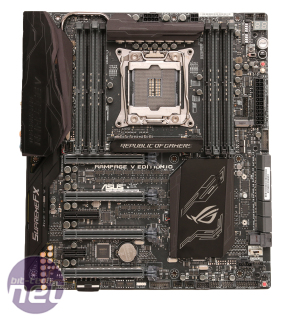 We've seen a few exceptional examples of ultra high-end motherboards from all the key players over the years, but it's Asus's Rampage for Intel's premium CPU socket that is often regarded as the ultimate motherboard excluding workstation models. This time around, the company is not only building on the previous Rampage for LGA2011 - the Rampage V Extreme, but this is ROG's 10th anniversary, so we were expecting something special.
We've seen a few exceptional examples of ultra high-end motherboards from all the key players over the years, but it's Asus's Rampage for Intel's premium CPU socket that is often regarded as the ultimate motherboard excluding workstation models. This time around, the company is not only building on the previous Rampage for LGA2011 - the Rampage V Extreme, but this is ROG's 10th anniversary, so we were expecting something special.Let us introduce the Rampage V Edition 10 - a £500 monster of a motherboard that hopefully has everything you could possibly want from a Broadwell-E based slab of PCB, including all the features that made the likes of the X99-Deluxe II, ROG Strix X99 and Maximus VIII Formula such great boards recently too.
To start with, there's obviously a big focus on extreme overclocking. The eight switches near the LED POST code display are for toggling on and off the DIMM and 16x PCI-E slots to deal with misplaced hardware that you might want to switch around or test if it's working. There's an LN2 mode jumper, and slow mode switch, additional CPU and PCI-E power connectors, voltage check points, a dual BIOS switch and a ROG extension connector.
Click to enlarge
These are all in addition to the full works when it comes to overclocking and testing tools such as power and reset buttons, retry and safe boot buttons as well plenty of cooling on the board itself. However, the Rampage has always been about including gamers and general enthusiasts in the mix too, and there's plenty for those to like here as well.
Click to enlarge
The board looks fantastic and a peak round the rear shows an integrated I/O panel, with no ugly exposed ports - a first for any motherboard as far as we're aware. That said, there's still a shield frame in the box so technically Asus has just filled in the gaps - you still need to use the frame for a totally sealed I/O panel, which seems a bit odd.
Click to enlarge
There's extensive RGB lighting covering the PCI-E slots, I/O panel, PCH heatsink and the side of the backplate in one continuous strip, and all areas are individually controllable in the Windows-based Aura software. Thanks to a black colour scheme with none of the red details of old, it's simple to colour-match the board to your system as a result.
Click to enlarge

MSI MPG Velox 100R Chassis Review
October 14 2021 | 15:04

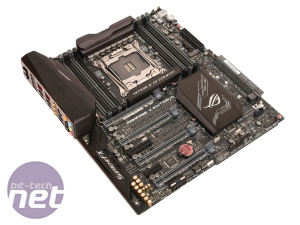
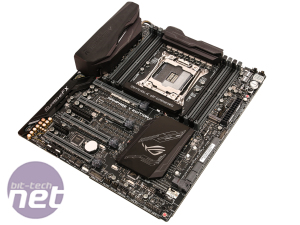
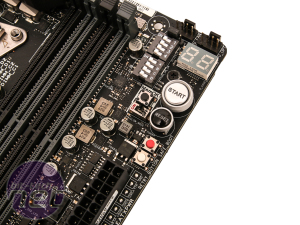
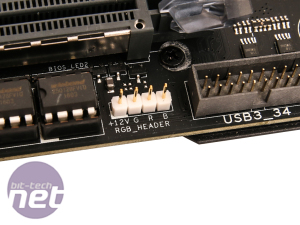
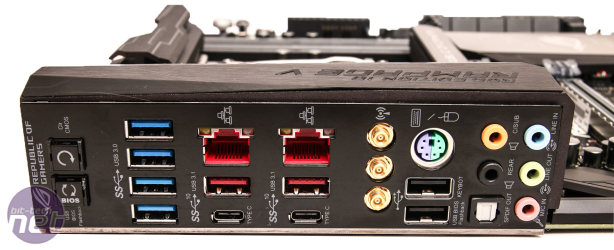
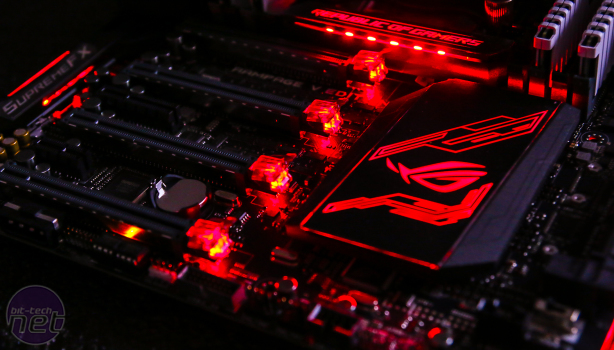







Want to comment? Please log in.